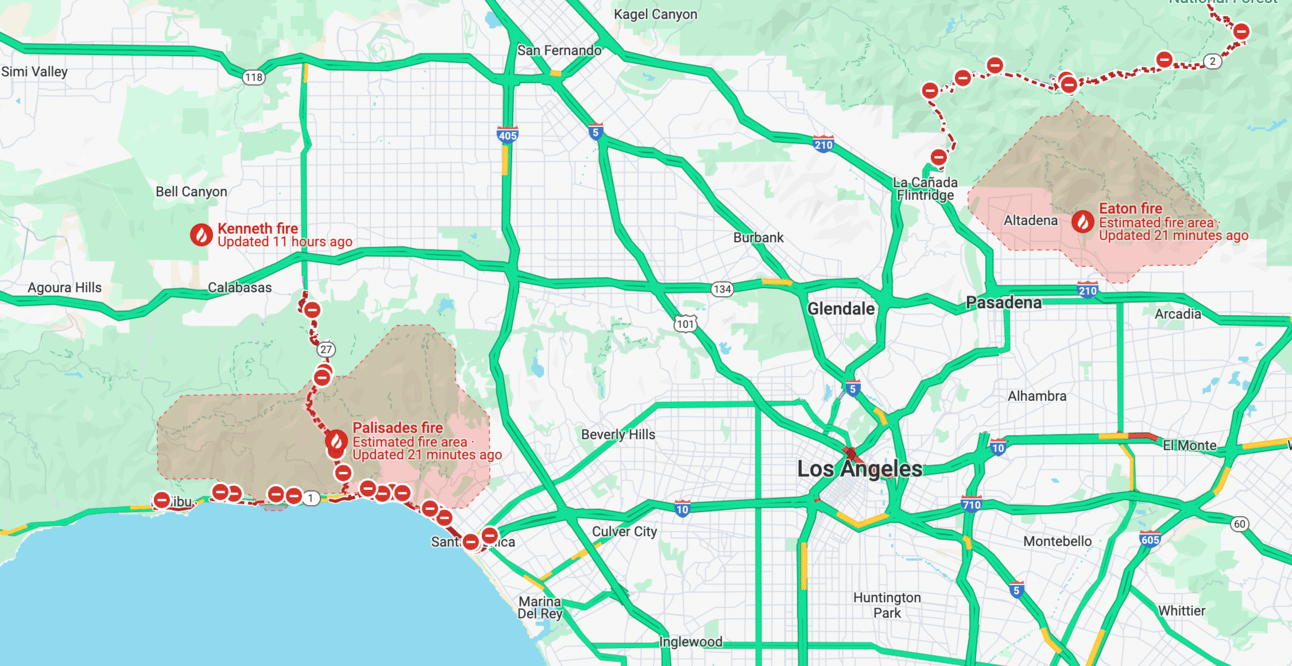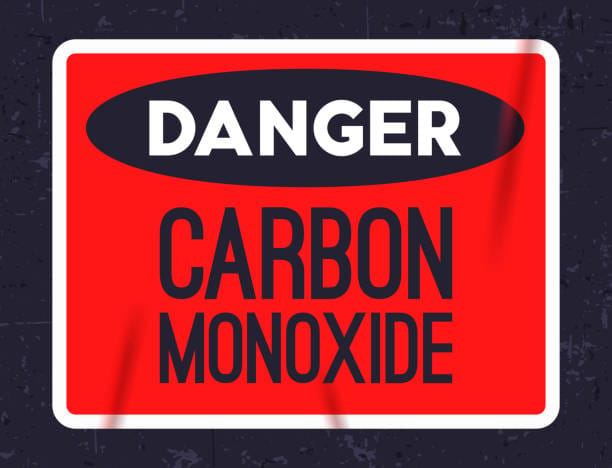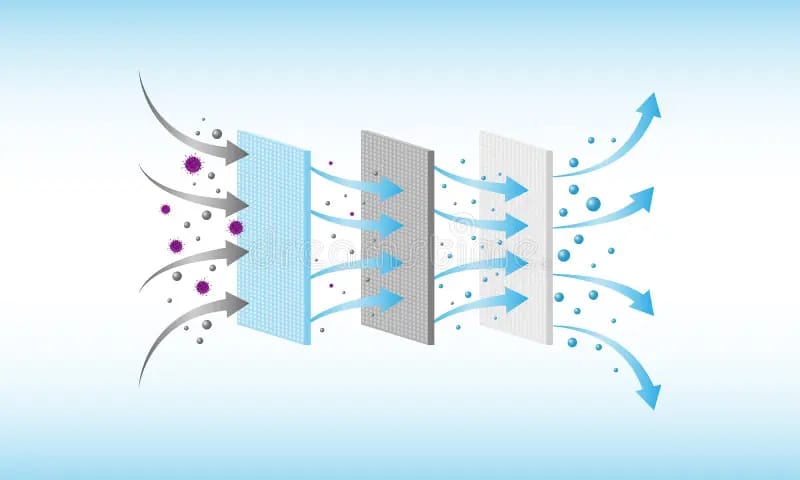- Aeviva
- Posts
- L.A.'s Wildfire Smoke Is More Dangerous Than You Think: The Hidden Risks and How to Protect Yourself
L.A.'s Wildfire Smoke Is More Dangerous Than You Think: The Hidden Risks and How to Protect Yourself
Uncover the toxic truths behind the smoke and learn how to safeguard your health.
The first week of January 2025 brought unimaginable devastation to Los Angeles as raging wildfires swept through the region, fueled by extreme drought and Santa Ana winds. The fires have consumed over 35,000 acres of land, leaving entire neighborhoods in ashes and destroying more than 10,000 structures, including homes, businesses, and critical infrastructure. Tragically, the fires have claimed the lives of at least 10 people, with dozens more injured. Nearly 200,000 residents have been evacuated, seeking refuge from the encroaching flames.

The financial toll is staggering, with early estimates placing damages at over $50 billion, making this one of the most costly wildfire events in California's history. However, the impact goes far beyond the physical damage. As smoke blankets Los Angeles and its surrounding areas, millions of residents are now grappling with a public health crisis stemming from hazardous air quality.
Wildfire smoke contains a toxic mix of harmful chemicals and fine particulate matter that can penetrate deep into the body, causing both immediate and long-term health issues. Here’s an in-depth look at the dangers of wildfire smoke and how you can protect yourself and your loved ones during this crisis.
Start the new year feeling refreshed and energized.
Cornbread Hemp’s CBD Sleep Gummies are here to help you achieve your best sleep yet. Unlike other options, these gummies are USDA organic and melatonin-free. Instead of melatonin, which can leave you groggy, they’re crafted with hemp flower, lavender, chamomile, and valerian root—ingredients that gently calm your mind and promote uninterrupted, restorative sleep.
As a Aeviva reader, you’re in luck: use code RESOLUTION at checkout to enjoy 30% off your first order.*
*One-time purchases only, cannot be combined with subscription discounts.
What’s in Wildfire Smoke?
Wildfire smoke is far more than visible ash—it’s a complex mixture of harmful chemicals, particles, and gases released when various materials burn.
Particulate Matter (PM2.5):
Tiny particles less than 2.5 micrometers in diameter that bypass the body’s defenses, lodging deep in the lungs and entering the bloodstream. PM2.5 is linked to respiratory and cardiovascular diseases.Carbon Monoxide (CO):
A colorless, odorless gas that reduces oxygen levels in the body. High exposure can cause dizziness, confusion, and in severe cases, death.

Benzene:
Found in smoke from burning synthetic materials like plastics, benzene is a known carcinogen that affects the blood and immune system.Polycyclic Aromatic Hydrocarbons (PAHs):
Toxic chemicals released during the burning of organic materials. Prolonged exposure is linked to DNA damage and cancer.Formaldehyde:
Irritates the respiratory system and eyes, and long-term exposure has been associated with cancer.
💡 Did You Know? Wildfire smoke can travel hundreds of miles, spreading harmful pollutants far beyond the immediate fire zones.
Immediate and Long-Term Health Risks
Wildfire smoke can cause both immediate and lasting health issues.
Immediate Effects:
Respiratory irritation (coughing, wheezing, shortness of breath)
Aggravation of asthma and chronic bronchitis
Eye irritation, headaches, and fatigue
Long-Term Effects:
Chronic obstructive pulmonary disease (COPD)
Increased risk of lung, bladder, and other cancers due to carcinogenic chemicals
Cardiovascular diseases, including arrhythmias and heart attacks
💡 Fact: Vulnerable populations, including children, the elderly, and those with pre-existing health conditions, are at the greatest risk.
How to Protect Yourself Professionally and Effectively
1. Monitor Air Quality Levels:
Stay informed by checking real-time air quality indexes (AQI) through reliable sources like the EPA’s AirNow or apps like AirVisual.
AQI Guide:
0–50: Good
51–100: Moderate
101–150: Unhealthy for sensitive groups
151+: Hazardous for all
2. Create a Clean Indoor Environment:
Seal Your Home: Use weatherproof strips on doors and windows to prevent smoke from entering.
Run Air Purifiers: Use devices with HEPA filters to capture harmful particles. Ensure your purifier matches the size of the room for maximum efficiency.
Avoid Indoor Pollution: Refrain from burning candles, using fireplaces, or vacuuming without a HEPA filter, as these activities worsen indoor air quality.

HEPA filter
3. Limit Outdoor Exposure:
Avoid outdoor activities, especially strenuous exercise, when air quality is poor.
If you must go outside, limit your time and wear a protective mask.
4. Use Proper Masks:
Only N95 or P100 respirators effectively filter out PM2.5 particles. Ensure a proper fit for maximum protection.
Avoid cloth or surgical masks—they do not block fine particles.
5. Maintain Hydration and Nutrition:
Drink plenty of water to keep mucous membranes moist, which helps trap harmful particles.
Consume antioxidant-rich foods (e.g., berries, spinach, nuts) to combat inflammation caused by smoke exposure.
6. Protect Vulnerable Individuals:
Elderly family members, children, and those with health conditions should remain in well-ventilated, air-purified spaces.
💡 Pro Tip: Invest in a portable generator to ensure air purifiers and fans remain operational during power outages caused by fires.
Long-Term Precautions
The effects of wildfire smoke can linger long after skies clear.
Regular Health Check-Ups:
Monitor for symptoms like persistent cough, chest pain, or difficulty breathing, and consult a healthcare provider.Lung Function Tests:
Individuals with prolonged exposure should consider spirometry tests to evaluate lung health.Mental Health Support:
Wildfires and evacuations cause significant psychological stress. Consider counseling or support groups to address anxiety and trauma.
Kickstart your morning routine
Upgrade your day with award-winning DIRTEA Coffee Super Blend. For people seeking sharper focus, a calm mind, and lasting energy:
Over 1,000mg of Lion's Mane per Cup
80% less caffeine than regular coffee
Made with the highest quality Organic Certified ingredients.
The wildfires in Los Angeles have left physical and emotional scars on the city, but the invisible threat of toxic smoke continues to affect millions. By staying informed and taking proactive steps, you can protect your health and support your community during this challenging time.
Wildfire smoke is a reminder of how interconnected our environment and health are. As recovery begins, prioritizing safety and well-being will help rebuild resilience for the future.
Take-Home Message
Wildfire smoke contains toxic chemicals like PM2.5, carbon monoxide, and benzene, which pose serious health risks.
Protect yourself by staying indoors, using HEPA filters, and wearing N95 masks.
Monitor air quality and avoid unnecessary exposure.
Long-term risks include respiratory and cardiovascular diseases, as well as psychological stress.



Reply